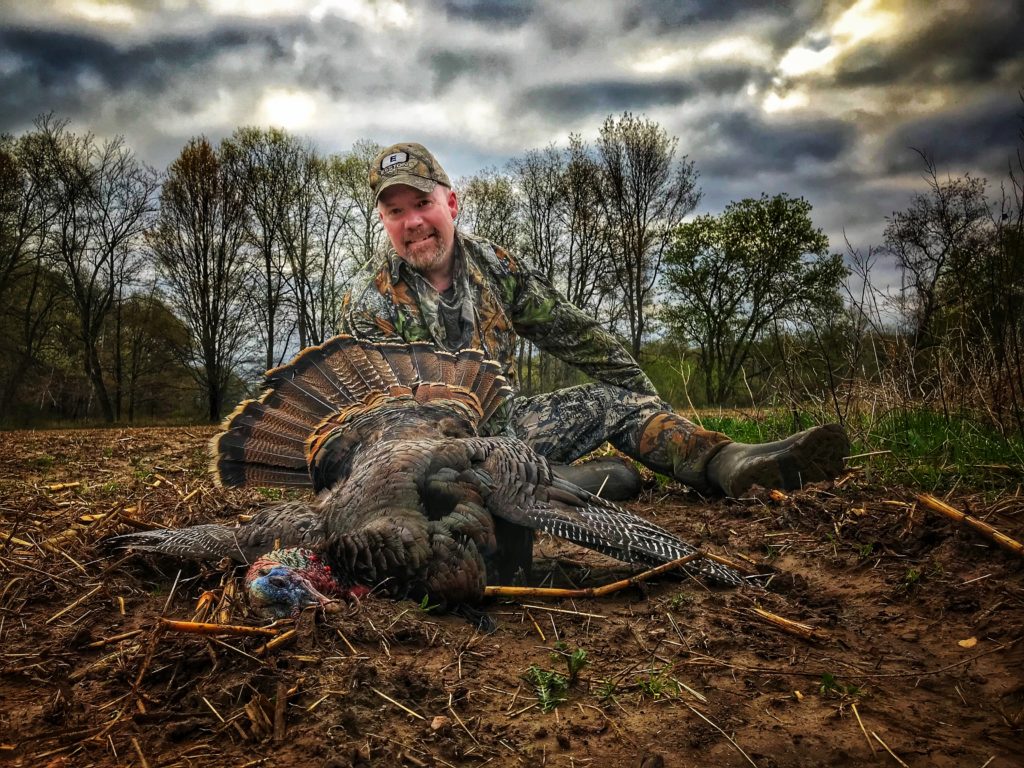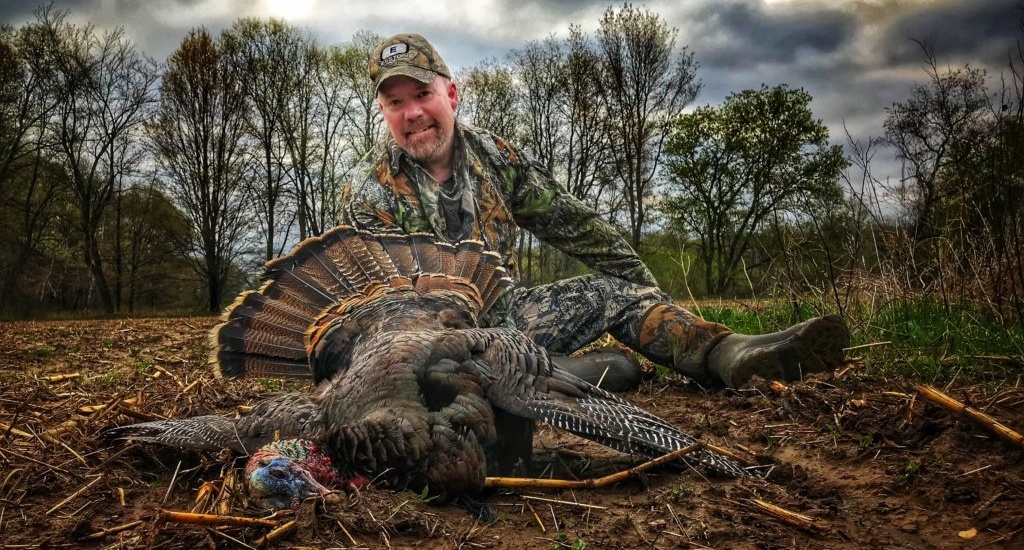Deer hunting is our passion 365 days a year, but that’s not to say we don’t take advantage of all the awesome opportunities in the outdoors. Like turkey hunting. For me, chasing gobblers in spring is not only a oft-anticipated ritual, it’s an obsession.
I hear from a lot of Deer & Deer Hunting readers and TV viewers every year who are aspiring turkey hunters, and the No. 1 question I receive is: How often should I call when turkey hunting? I am by no means the authority on turkey calling, but I have had the good fortune over the years of having hunted with and learned first-hand from some of the top names in the sport: Chris Parrish, Eddie Salter, Don Shipp, Jerry Peterson, Will Primos, Troy Ruiz, Ray Eye, Pat Reeve, Chad Schearer, Tes Jolly, Joe Blomes, Bo Pitman, Brian Lovett and Gordy Krahn to only name a few. Sharing the woods with such great hunters taught me so much that I probably could have never learned on my own. Well, at least as not as fast-tracked as it happened for me. Thanks to their expert insights on calling and hunting, my next turkey will be my 70th. I could have never done that on my own.
Here are some of the key points those great hunters taught me when it comes to how to call a turkey into range:

Wild turkeys have incredible eyesight. To get the drop on a bird, hunters should pay close attention to camouflage and, more important, their movements. (photo by author)
The key to hunting a gobbler is knowing he’s, in fact, there. It’s really easy to get all excited and start calling before daylight. Most times, if you do, you will get a bird to gobble, but that tactic can often hinder further efforts to get him to fly down for a closer look. Over the years, I’ve learned that if I let the woods “come to life on its own,” which means letting the gobblers make the first move and gobble on their own, it goes a long way to having them show more curiosity to that “hen” they didn’t even know was there.
After he gobbles first, I’ll typically let the bird keep gobbling until I’m pretty sure he’s flown down from his roost. From there, I’ll move to strategy No. 2.
Tip 2: Take the Gobbler’s Temperature
With the bird on the ground, I’ll start with a few soft clucks, yelps and purrs. Nothing fancy. The idea here is to gauge how interested the gobbler is going to be right off the bat. Most times gobblers will already have hens nearby. That’s a tough situation, because why would a gobbler leave the real thing to chase another hen? (although I’ve seen guys like Salter, Shipp and Reeve work calls so creatively they did just that)
If that gobbler is on the ground, and he gobbles at anything I throw at him right away, I may or may not get a tad aggressive by throwing in an excited cutt or two followed by a string of semi-excited yelping. If he gobbles again, then it’s time to wait a minute or two and toss in a contented purr. From there, it’s on to Step 3.
Tip 3: Shut the Heck Up!
With the gobbler vocal and at least moving in my direction, it is time for me to zip it. No more calling. This was the hardest thing for me to learn as a turkey hunter. Turkey hunting great Jim Casada always described it as “learning to operate on turkey time.” What he meant by that was as a hunter, you need to program your brain so it thinks like a turkey. Turkeys don’t have meetings, conference calls or lawns to mow. The turkey is going to take his sweet time in going about his day because, after all, everything (and I mean everything) is out to kill him 24/7. He’s in no hurry.
After getting the bird to gobble, I’ll hit them with an appropriate amount of silence. Again, it depends on the situation. It could be 15 minutes. It could be an hour. It all depends on the terrain I’m hunting and a few educated guesses as to what that turkey might be doing. Example: He might be strutting on a logging road just outside of my view, or he might be navigating some kind of obstruction — i.e. fence line, stream, rock pile, etc.
Tip 4: Be Ready to Make the Next Move
Although the silent approach is often the only tactic needed to pique a gobbler’s curiosity enough to come in for a closer look, there are times when it’s necessary to call an audible.
If the gobbler goes silent but then starts gobbling farther away from my location, I’ll survey the situation and sometimes pick up and move in closer. Moving on a gobbler is risky. Sometimes just a slight repositioning will alert him to your presence. Other times, it is inadvisable because of the property (public land). I never move on a gobbler if I think there’s even a slight chance another hunter is in the area. It is simply not worth it. I’ve never been shot or shot at while turkey hunting (thank goodness), but I’ve heard plenty enough stories of people who have been. This is why it is important to know the land you’re hunting and who can and can’t be there at any given time.
Finally, one last tip:
Tip 5: Always Be Ready for the Gobbler to Show Up
During my early years of turkey hunting, I messed up on many opportunities simply because I wasn’t ready. I did everything else right: called when I needed to call; didn’t move; waited patiently for the gobbler to commit; etc. Then, when the gobbler showed up in gun range, I blew the opportunity by not having the gun up and ready to go.
Waiting for a gobbling bird to step into range is not the time to have your gun, bow or crossbow resting crossways on your lap (or on the ground next to you). Wild turkeys are among the wariest creatures you’ll ever hunt, and their eyesight is not matched by any other critter. They will pick you off in less than a heartbeat, and just because they’re closer than 30 yards doesn’t mean you cannot or will not miss the shot. It happens to everyone. Being “at the ready” means exactly what it says. Firearm shouldered, cheek buried in the stock, shoulders squared and eyeballs intently scanning the surroundings for the gobbler’s next move.
Being ready sometimes means holding that position for 5, 10, 15 minutes or longer. When the string of events deems it’s time to get ready, make sure you are comfortable. Get those sticks out of the way; move that stone that’s jabbing you in the rear-end; reposition from having to sit on that knarly tree root, etc. If you’re gun-hunting, get those knees propped up and steady that shotgun.
In the final analysis, a little preparation and a lot of patience will pay off in some mighty fine eating in the days following your hunt.
[embedded content]

